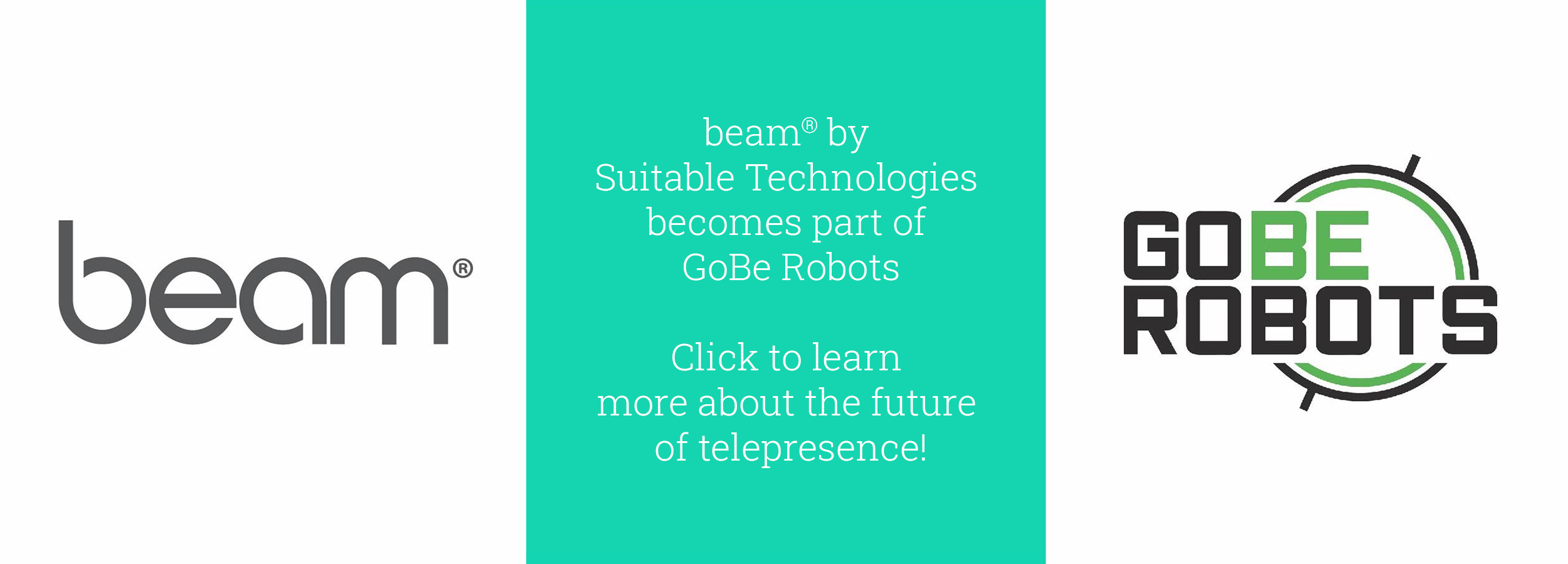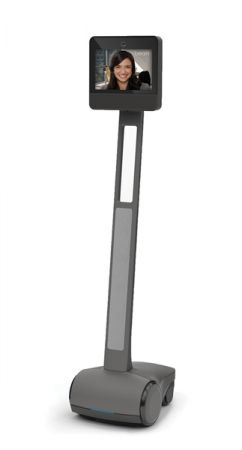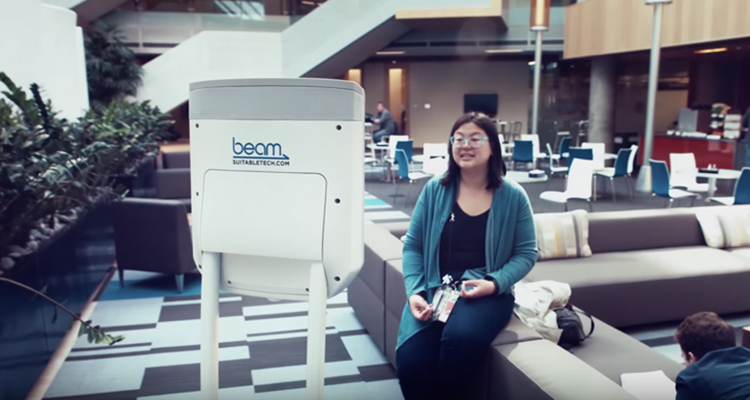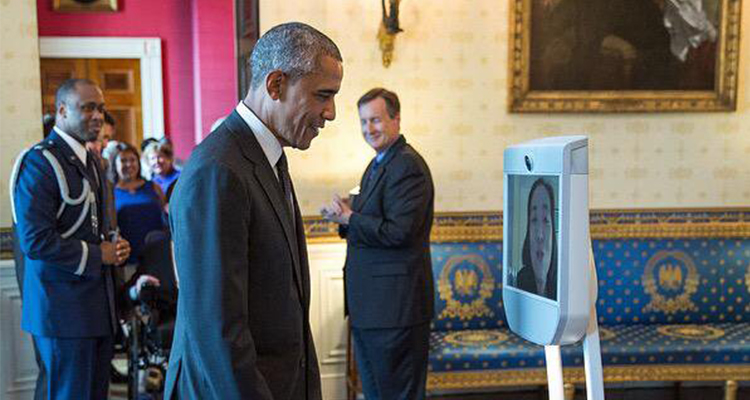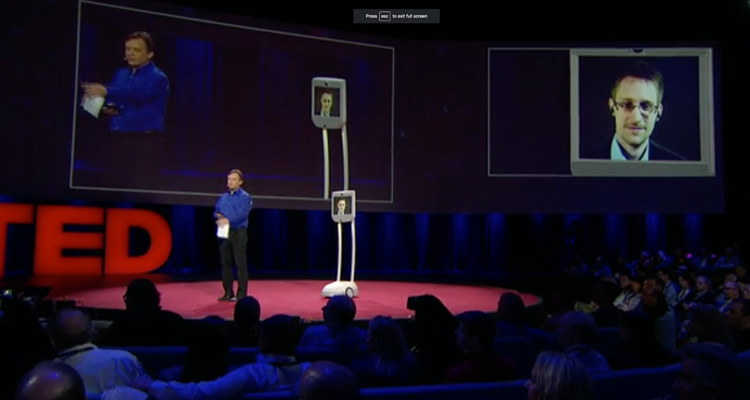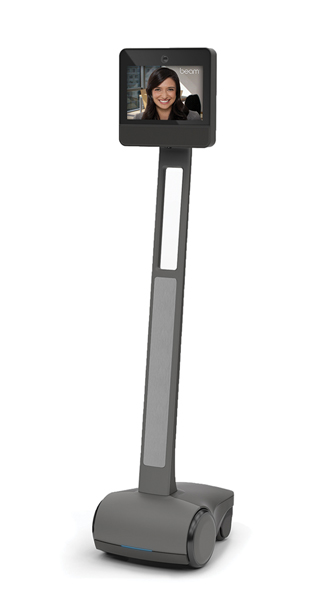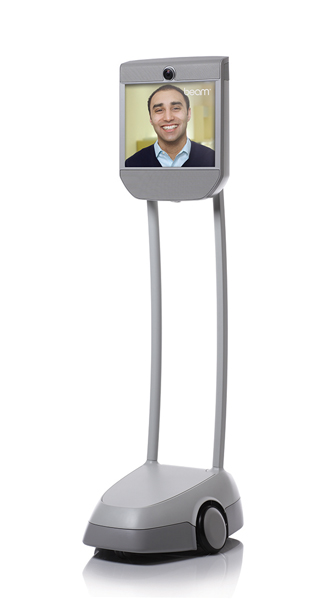Tools available to assist those with disabilities keep getting smarter and more intuitive each day. Most recently, Microsoft’s annual Ability Summit featured discussions around AI for Accessibility and their efforts to amplify human capability, showcasing tools such as color blindness filters and a read-aloud feature that highlights copy as it is spoken.
Along with Global Accessibility Awareness Day, these events remind us of the incredible ways Beams expand horizons, making the impossible possible.
Here are some highlights:
- Henry Evans uses a Beam as a body surrogate to travel around the world and talk about Robots for Humanity. He lectures at CalTech, gives TED talks, and tours museums (and Jay Leno’s garage!) with his Beam.
- Kavita Krishnaswamy, a PhD candidate in Computer Science at the University of Maryland, Baltimore County (UMBC), Google Lime Scholar and Microsoft Research Fellow, researches how robotics can improve accessibility for people with disabilities.
- Dr. Jennifer Rode, a senior lecturer in Digital Technologies in Education at the University College London, argues that the division between able and disabled is a social construct. She has firsthand knowledge of this topic and other “cyborg” related subject matter, as she relies on technology to better cope with a degenerative autoimmune disease and uses Beam to lecture, attend meetings and interact with colleagues.
- Beam helps homebound students by allowing them to attend class and socialize with their peers.

Henry Evans and wife Jane
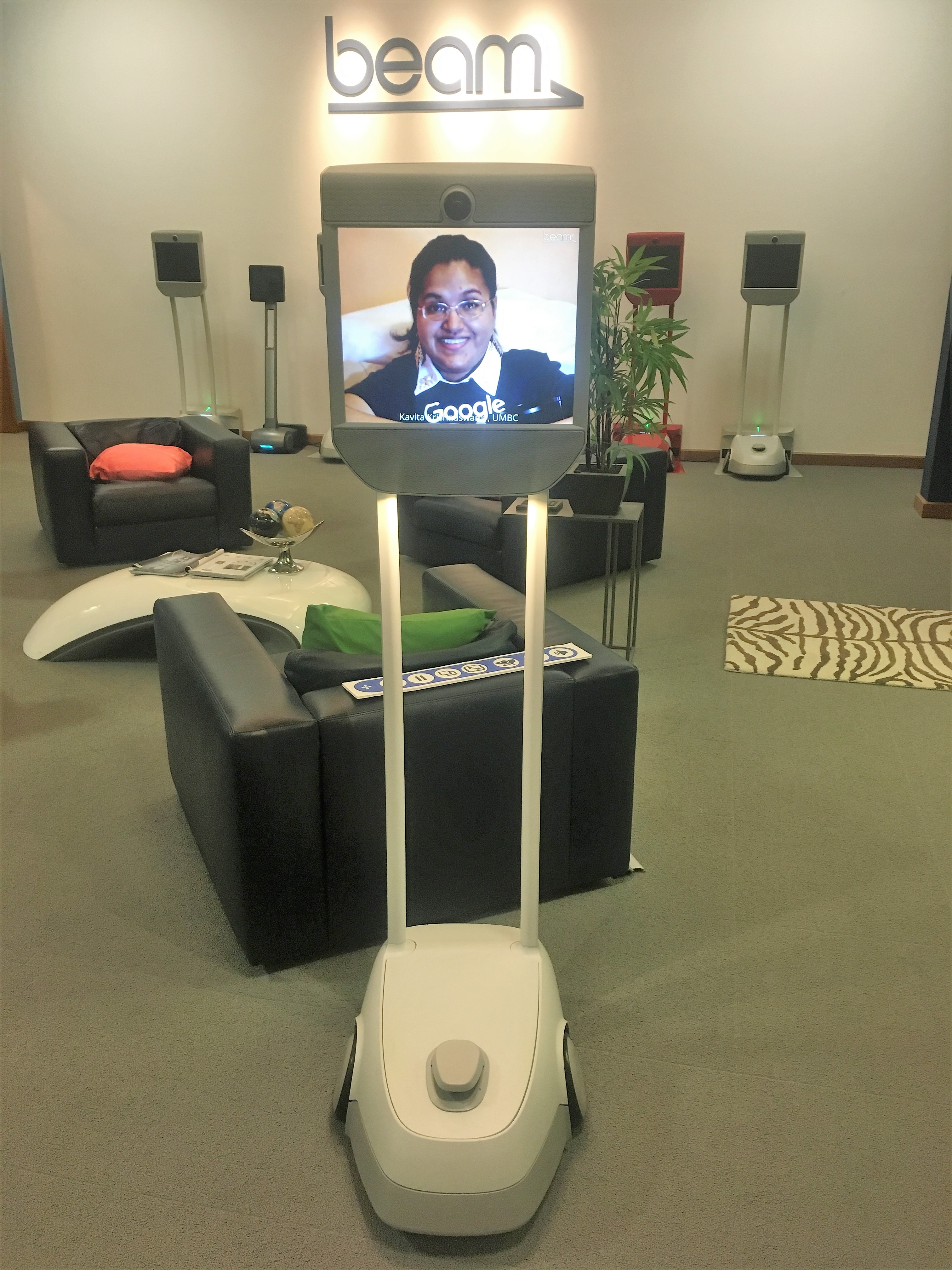
Kavita Krishnaswamy at Suitable Technologies' HQ in Palo Alto
When it comes to addressing accessibility issues, we are in good company. The following tools help those with disabilities overcome an assortment of challenges to leading a productive life:
Be My Eyes lets you offer instant help to someone who is visually impaired and needs assistance with an everyday task. (For example, checking expiration dates at the supermarket or confirming recipe details.)
Proloquo2Go is an award-winning, symbol-based communication app that gives a voice to those who cannot speak. This app is used by more than 175,000 people as a way to express themselves and develop language skills. It can even be personalized by parents, teachers and therapists to target specific tools or skill sets. The personalization also means that the app can grow along with the user.
Uber has introduced UberWAV (wheelchair-accessible vehicle) in New York City. Getting around in a wheelchair can now be as easy as pulling up the Uber app and plugging in a destination. Every driver is certified to assist with entry and exit, and right now, arrival times are better than traditional paratransit options. We look forward to this program rolling out nationwide!
We’re proud to be part of the “next wave” of technology that empowers people with disabilities to live their lives to the fullest.

